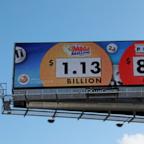
Is this the year North Carolina finally turns blue?
Since Obama won the state in 2008, North Carolina has been a perennial tease to Democrats. They have repeatedly come within a few percentage points of carrying it again but have yet to get over the hump. Even in 2020, when now-President Joe Biden's decisive popular-vote win carried him to victory in most other swing states, North Carolina still voted for Trump by 1 percentage point.
But the state is slowly trending in the right direction for Democrats. In the 2000 election, it was 13 points redder than the nation as a whole; in 2008, it was only 7 points redder. And in 2020, it was just 6 points redder. If that trend continues, it could just be a matter of time until Democrats carry the state once again.
That time could be now. In 538's final polling average of North Carolina, Trump led Harris by just 0.9 points — well within the margin of error.

North Carolina has become a competitive state thanks to two main demographic factors. First, it has a lot of Black voters: Its citizen voting-age population is 21% Black, while the nation as a whole is just 12% Black. Second, its suburbs are growing fast and could be getting bluer. According to the 2020 exit polls, only 39% of suburban voters in North Carolina opted for Biden — significantly lower than the 50% who did so nationally. But according to an average of polls in September, suburban voters in North Carolina were supporting Harris at about the same rate (51%) as they were nationally (50%).
But Republicans still have one trump card in the Tar Heel State: its significant rural population. According to 2020 exit polls, 27% of North Carolina voters lived in rural areas, higher than in all six of the other main swing states. And rural areas in North Carolina have gotten significantly redder since Obama's win in 2008.
How North Carolina became a swing state in the 2024 presidential election









